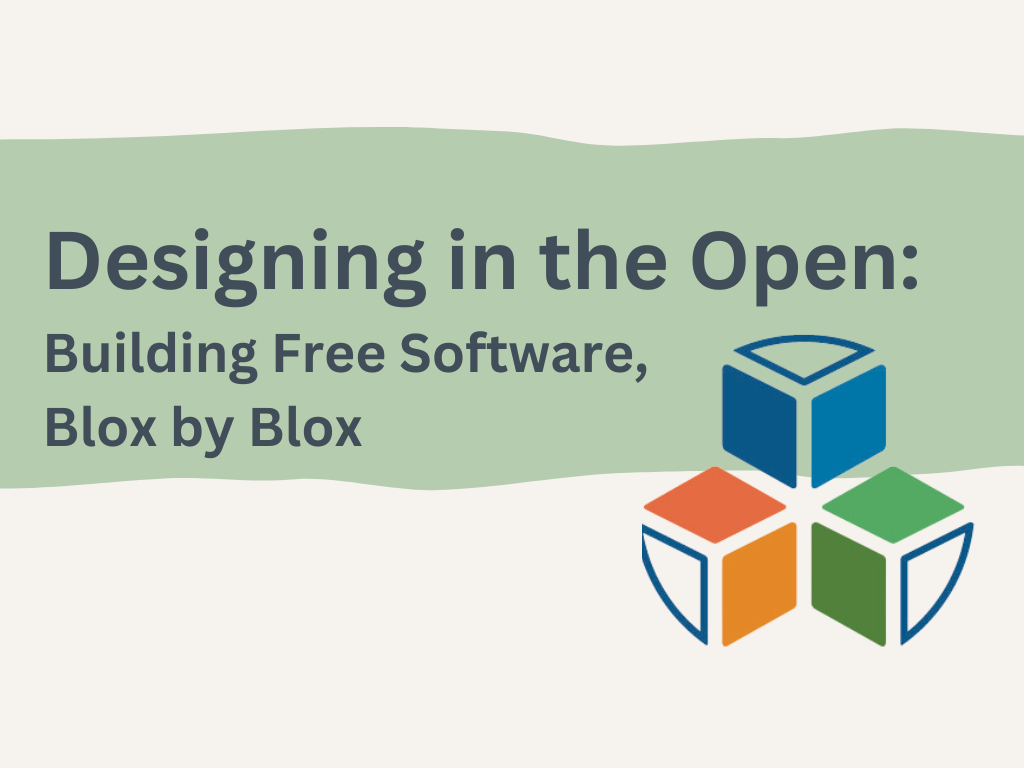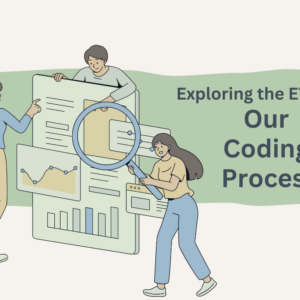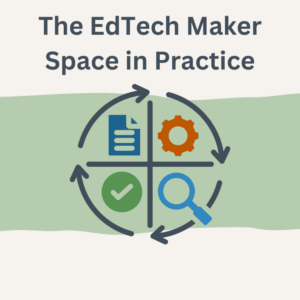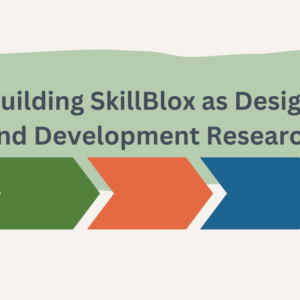By Jeff Goumas
World Education’s CrowdED Learning initiative has a mission to build a sustainable, equitable open education ecosystem that increases access to quality education and lifelong learning for all. Starting in 2017, we set forth on this mission by working to a) learn what free and open educational resources (OER) were being used within adult education, b) understand how instructors and learners were using these resources, and c) identify what barriers prevented their more widespread use.
Through all of this information- and needs-gathering, the idea for an open content platform—SkillBlox—was born. From the start, there was a clear vision of the basic aim of the platform; namely, to provide a curated OER library organized around the key skills needed by adult learners. What was not known at the time, however, was just how challenging building and maintaining free software might be.
In the spirit of our “open” approach, the purpose of this blog and all of the blogs on our project page is to provide a window into the path we’ve taken to get to where we are today and where we are heading in the process of designing, building, and sustaining a free and research-based online library of educational resources. As we have learned and continue to learn, this entails a healthy combination of strategy, timing, and luck.
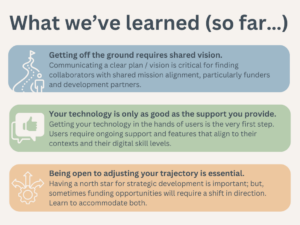
Step 1: Building a Minimum Viable Product (MVP)
The reception to SkillBlox was enthusiastic, including one “Where has this been all my life?!” But what we needed was a functioning, minimum viable product (MVP) to make clear to potential funders our vision for SkillBlox and why it is a much-needed tool to support adult education instructors and learners.
At one point, we engaged a local adult education organization to consider building SkillBlox into a multi-year grant they had been awarded around the use of technology in adult education. They drafted an agreement that included “royalties,” which was surprising given we were clear that SkillBlox is and will always be free to users. What we quickly learned was that without having a fully-formed plan in place for building and maintaining the platform, it was difficult both to establish buy-in and clear terms for how we might work with partners moving forward.
We then connected with a local software development company whose badging platform was being used within adult education. They recognized the value SkillBlox could provide by organizing free learning resources according to learners’ needs and goals. With a stroke of luck, they offered to build out our MVP.
Step 2: Attracting—and Learning from—Actual Users
Attracting users is no small feat. Little did we know, however, that our release date—March 20, 2020—would coincide with a global pandemic in which every teacher suddenly found themselves in need of online resources to help their students keep learning. Between this unique circumstance and the groundwork of having spent the previous two years barnstorming the adult education conference circuit drumming up interest in SkillBlox, we felt ready to launch into the world.
The spring and summer of 2020 was a whirlwind of presentations to help teachers understand how they could use SkillBlox to integrate OER into their instruction. What we learned was that just offering OER via the SkillBlox platform was not enough. Educators required sustained professional development that not only taught how-to’s of OER use but also provided meaningful opportunities to immediately apply this learning.
Realizing we had to adjust our our approach, we worked to design a professional development opportunity that engaged participants in learning how to evaluate high-quality OER, along with how to design effective learning materials using free edtech software, with a goal of having participants apply these skills to curate, adapt, create, and share new OER. Held in July and August 2020 and named the EdTech Maker Space, this PD pilot resulted in just over 40 educators generating over 1,000 open, adaptable OER that resulted in the Marshall Leveled Reading Program.
We now had proof of concept for a tool (SkillBlox) and a process (the EdTech Maker Space), which together demonstrated how we could achieve our vision of building a sustainable, equitable open education ecosystem. We also hit a crossroads where we realized that going it alone might not be the fastest way to achieving our goals for SkillBlox. We had partnered previously with World Education, and recognized its mission aligned with CrowdEd Learning’s values of equity and open access. We determined that merging into this established entity within the U.S.-based adult education system could provide the organizational home that SkillBlox needed to pursue funding for ongoing development and sustainability.
Step 3: Following the Funding
Upon joining World Education, CrowdED Learning’s work was immediately built into a flexible grant funded by the World Education Services Mariam Assefa Fund (no connection to World Education). The goal for this funding was to build a learning platform to serve immigrant- serving organizations, employers, and refugee and immigrant worker-learners. In the midst of starting this project, two additional opportunities emerged that we hoped would allow us to a) expand features within SkillBlox and b) leverage our EdTech Maker Space to generate more OER to add to SkillBlox. In order to secure this funding, however, we recognized that we would need to shift our priorities for EdTech Maker Space projects and SkillBlox feature development—better situating them to align to these potential funding opportunities, while simultaneously maintaining our commitment to the intended audience and goals of our original funders.
To capitalize on these new funding opportunities, we worked strategically to align our initial Assefa-funded work. Specifically, this entailed employing our EdTech Maker Space approach to generate content to support instruction of the topic areas Teaching Skills that Matter initiative (Digital Literacy, Financial Literacy, Health Literacy, Civics Education, and Workforce Preparation), as well as prioritizing SkillBlox feature development to support finding and organizing resources within these topic areas, with a specific focus on Digital Literacy. This pivot helped to secure funding for two current initiatives, the Digital Resilience in the American Workforce (DRAW) initiative (partnered with Jobs for the Future and funded by OCTAE) and the TSTM-SkillBlox Instructional Support Pilot (partnered with American Institutes for Research and funded by the Institute of Education Sciences).
The DRAW funding supported implementation of two EdTech Maker Spaces: one that helped to discover and curate even more OER to support digital skill development, and one that helped us learn how the process could be used to design a full set of curriculum resources—developed entirely by educator participants—the Digital Skills Glossary.
The TSTM-SkillBlox funding supported the implementation of five EdTech Maker Spaces that helped us better understand the needs of educators related to curating, evaluating, designing, and adapting OER. More importantly, it added a much needed integration of research into our content development process.
Preparing for the Road Ahead
We have now reached a key milestone of offering a platform that provides access to thousands of relevant, contextualized, and free instructional resources. Our most recent release also includes a handful of key new features that support moving forward to our next phase: IES-funded, research-based development through which we will add new feature sets to further support educators in finding, sharing, and evaluating the OER within SkillBlox.
While the path to get here took several unexpected turns, the insights we’ve gleaned through unexpected challenges in development and implementation have ultimately helped us to be more strategic. In our next phase, we are excited to work alongside educators, building new OER from the ground up, enriching our understanding of what is needed, and ensuring SkillBlox development has a well-documented evidence base.

